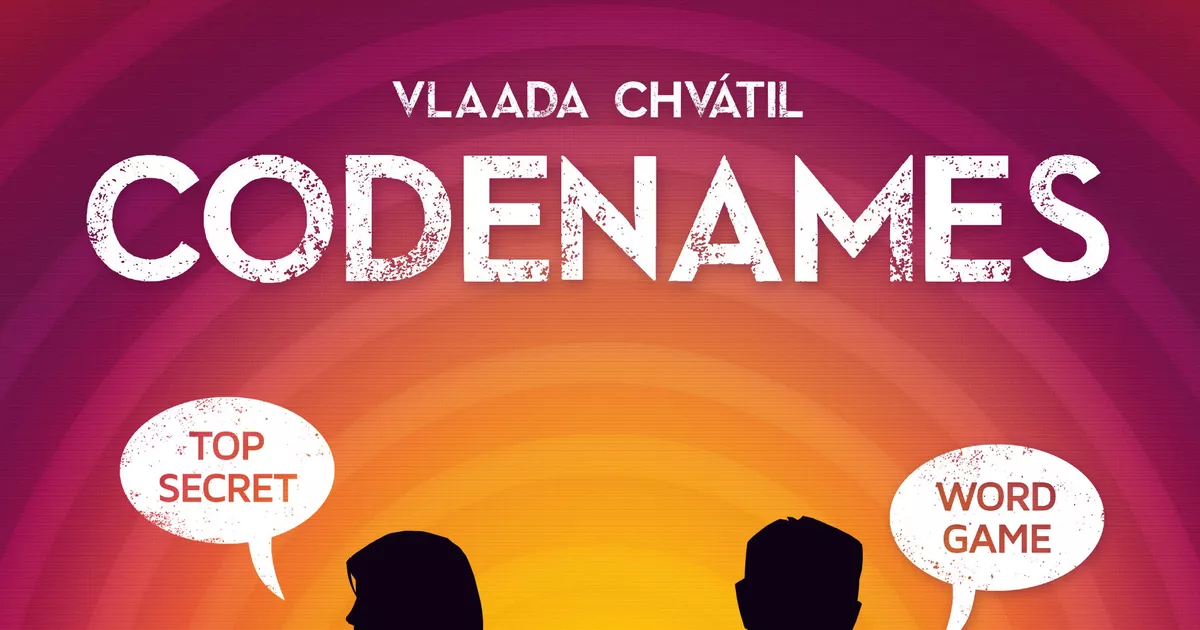Codenames is a game where two pairs of players compete to communicate and identify all their team’s code words first. Codenames was created by Vlaada Chvátil, and is available online at codenames.game and as a physical board game. Its target audience is anyone aged 14 and above.
Our team’s current concept is “Fake Friends”, a physical game where all players are paired up into “friends”, with the exception of 1-2 “fakes”. Each friend pair shares a unique code word. The friends need to find their partner without getting sabotaged by a “fake friend”, who will try to insert themselves into the friendship.
While both games share the characteristic of limited transmission of a shared code to a partner, the difference in player roles, knowledge and objective in “Fake Friends” leads to a new player dynamic, as well as a more prominent, relatable narrative that emphasizes social frameworks.
When I played Codenames with my group, I noticed how the mechanics were simple, but cleverly designed to introduce complex dynamics and layers of unpredictability. Firstly, the restriction on the clue given by the spy master (only 1 word and 1 number) is a key element of the game experience. Since many of the code words are all deliberately chosen to relate to each other, it is difficult for the Operatives to understand the Spymaster’s original intention. This creates the dynamic of not only the two teams competing against each other, but the two players within the team needing to understand and rely on each other’s thought processes and instincts. Both roles require significant strategizing, making them equally engaging to play. The outcome of the game is unpredictable because each person’s mind interprets the words differently. Here is an example from one of our games:

In this example, I was the Spymaster for the blue team, and I gave the clue “Color 2” with the intention of representing “Greenhouse” and “Blues”, since both words have a color in them. However, the operative, Sofia, interpreted my clue more literally, causing her to choose “Ink” and “Pad”. Below is another example where I act as the operative:

Sofia gave me the clue “Curvy 1” with the intention of me choosing “Fiddle”, a curvy instrument. However, she overlooked the choice of “Figure”, which happened to be the death card – causing her to exclaim “Crap!” when I chose that card and lost instantly. This example shows how the colors can create bias and the crucial need to account for patterns across the entire board.
Some other games in the same genre as Code Names are: Monikers, Taboo and Charades. These games all generally involve communicating some idea to a team member, with specific restrictions. In these games, the players only have to handle one code at a time, and speed is a big factor. Whereas in Codenames, players need to express multiple codes with only one clue. The players have to try and find connections among code words while juggling all the possible outcomes, calling for a more thoughtful, slow-paced strategy.
Some recommendations I have for Codenames is to accommodate more than 4 players. Currently, the set-up rigidly allows for only 4 players, but I can envision the game working well with a larger number of players as well. Also, when the opponents are taking their time sending a clue/ guessing, it is quite boring to wait for them. Perhaps new mechanics could be introduced to engage the players better during the opponents’ turn, or incorporate more time pressure.
We can compare and contrast Codenames with “Fake Friends” in depth using the MDA framework. In terms of mechanics, as mentioned, the similarity is that pairs of players need to communicate a common code. A key difference is that in “Fake Friends”, players do not know who their counterpart is, and there is the additional role of the fake friend, who aims to sabotage others. The communication is done by making some kind of statement, rather than a formatted clue. Moreover, the overall objective is different – you want to correctly identify your real friend, rather than the code word itself.
In terms of the dynamics, Codenames creates a strong team vs. team competition where partners strongly depend on each other, but not much verbal or physical communication is needed. On the other hand, our game strongly relies on verbal and physical cues, and everyone needs to rely mostly on their own judgment and use deduction to win against the saboteur, without having a team to collaborate with.
In terms of aesthetics, Codenames primarily provides challenge as the type of fun, whereas our game concept aims to incorporate narrative and fellowship. “Fake Friends” has a stronger narrative component, with the roles and code words strongly relating to the theme of friend group drama, which will hopefully create a more intimate setting and engage the players. During the playtest with my group, everyone had a great laugh trying to convey internet slang relating to social relationships, such as “delulu”, “snake”, “pick-me”. For Codenames, however, the premise is much less apparent than the underlying challenge. Moreover, the use of large group interactions may help familiarize everyone better and create stronger bonds.



